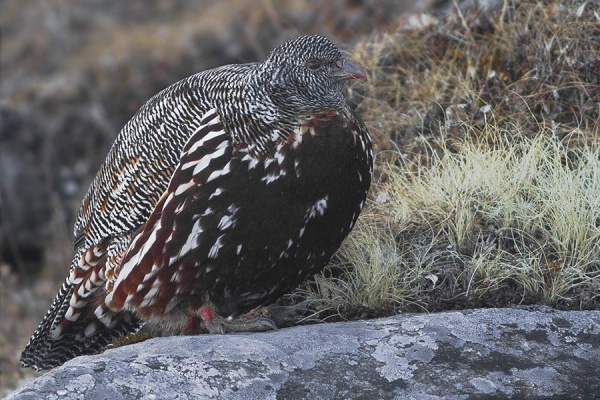Facts About Snow partridge
The snow partridge, a captivating bird from the pheasant family Phasianidae, resides in the high-altitude Himalayan regions of India, Pakistan, Nepal, and China. As the sole species in its genus, it thrives in alpine pastures and open hillsides above the treeline. Both males and females exhibit similar plumage; however, males are distinguished by a notable spur on their tarsus.
This bird is particularly striking with its grey upper parts, chestnut underparts, and red bill and legs. Its upper parts are intricately barred with black and white. Snow partridges measure between 38 and 40 cm in length, with males weighing 550–700 g and females 450–580 g. Young birds have mottled lower parts. First described by Brian Houghton Hodgson in 1833, the snow partridge is unique to the Lerwa genus.
Typically found in small groups of 6 to 8, snow partridges can form larger flocks of up to 30 during the non-breeding season. Their diet comprises mosses, lichens, berries, and plant shoots, and they occasionally ingest grit to aid digestion. They breed from May to July, nesting under rocks lined with moss. Their pale yellow eggs are adorned with reddish-brown markings. Parent birds are noted for their distraction displays to protect their young from predators.
Though generally not of high conservation concern, snow partridges are sometimes hunted due to their approachability compared to other species like the snowcock. They inhabit alpine pastures, grassy hillsides, and rocky terrains with vegetation, often seen sunning themselves on rocks during midday. When startled, they take off in rapid flight.
Interestingly, snow partridges also host bird lice and ticks, such as Chelopistes lervicola and Argas himalayensis. Despite some localized population declines, they remain an integral part of the biodiversity in the high-altitude regions of the Himalayas.

 Pakistan
Pakistan